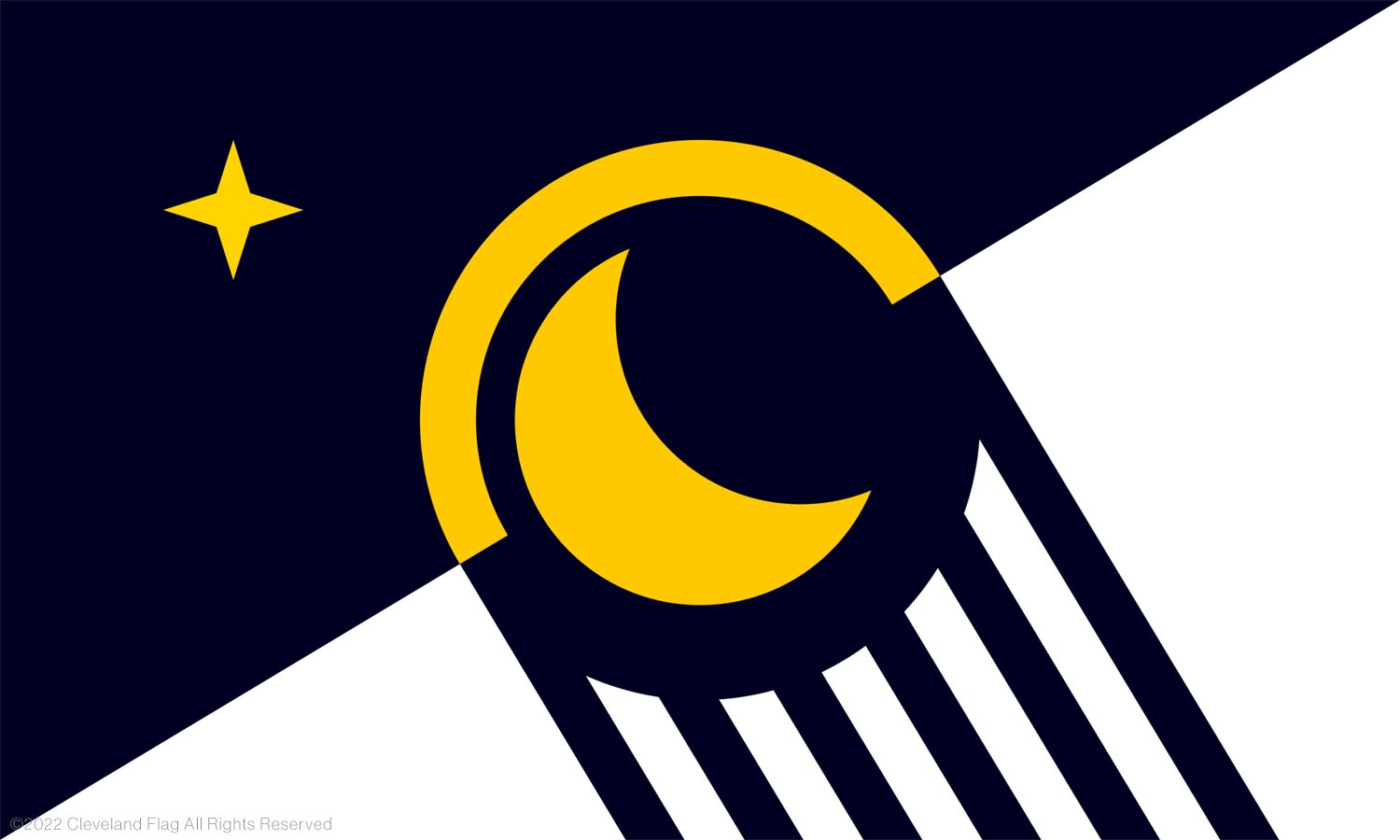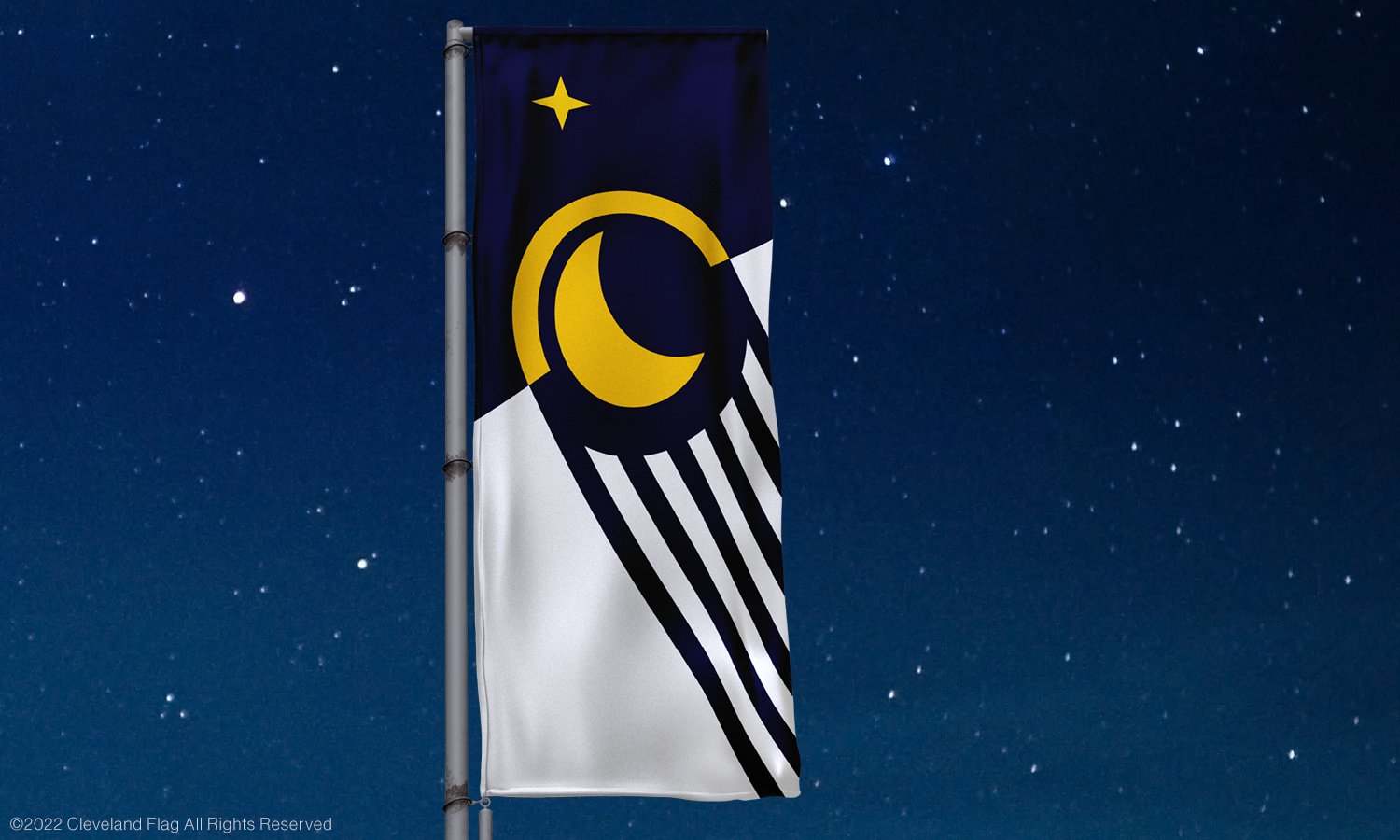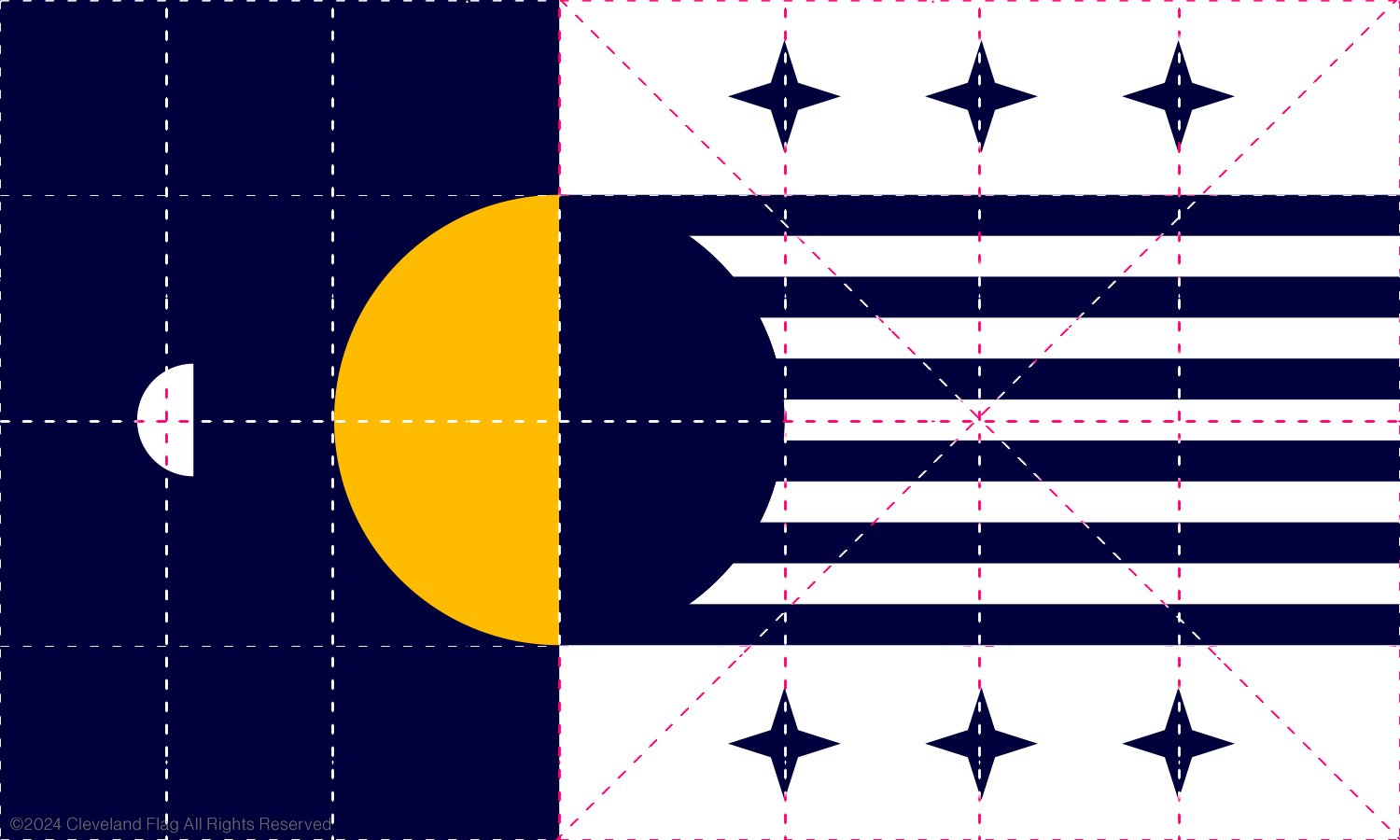
cleveland flag
about flag 08
At first blush, outer space and rock and roll appear to have little in common. Unless, that common thread is Cleveland, Ohio.
In 1941, the National Advisory Committee for Aeronautics established a research facility in Cleveland. The facility, at Cleveland’s Municipal Airport’s (later, Cleveland Hopkins Municipal Airport), provided the research to develop America’s burgeoning aviation industry. The laboratory excelled at supersonic aerodynamics research. At the time, the facility’s Altitude Wind Tunnel was the most advanced testing facility of its kind in the world.
In 1958, Congress established the National Aeronautics and Space Administration (NASA). The Cleveland facility was renamed the NASA Lewis Research Center.
Project Mercury was the designation for America’s first manned space flight program. Cleveland’s NASA Lewis played an integral part in the project. The facility modified the Altitude Wind Tunnel to test Mercury equipment, including the capsule’s retro, posigrade and escape tower rockets. NASA Lewis engineers also created the multi-axis spin inertia facility, or MASTIF, to teach astronauts to regain control of a tumbling space capsule. In the early 1960s, each Mercury astronaut visited Cleveland to train on the new device.
Cleveland’s NASA Lewis engineers designed America’s first microgravity experiment. The goal was to learn how liquids and liquid propellants, in particular, behaved in low gravity. The work proved vital in the development of NASA’s liquid hydrogen rockets.
From 1961 to 1963, NASA launched six Mercury missions. The Cleveland research directly contributed to the success of each space flight, including the May 5, 1961, flight that made Alan Shepard the first American in space and the February 20, 1962, flight that made John Glenn the first American in orbit. NASA Lewis played an important part in the Mercury and Apollo space programs. The Cleveland facility’s research was critical to develop the upper-stage launch vehicles that put a man on the moon.
Today, the NASA John H. Glenn Research Center at Lewis Field (renamed in 1999) is a 350-acre campus comprising 150 buildings and world-class research facilities. The organization continues its work on advanced spaceflight systems, aeropropulsion, space propulsion, power and nuclear systems and communications systems.
While NASA revolutionized space travel, another revolution was happening late at night on Cleveland’s airwaves.
In the late 1940s, Record Rendezvous was one of Cleveland’s largest record stores. Leo Mintz, the store’s owner, noticed an increased interest in rhythm and blues records. Record Rendezvous and RCA Distributor Main Line sponsored a midnight radio program on WJW 850 AM Cleveland radio. Mintz provided the records and Alan Freed was hired to host.
In 1951, Alan Freed’s late-night radio show, The Moondog Rock and Roll House Party, was a popular and energetic program. Freed opened each show with a piece of music called Moondog’s Symphony. On air, Freed referred to himself as the King of the Moondoggers.
On July 11, 1951, Freed became the first disc jockey to play rhythm and blues records on a major radio station. Rhythm and blues albums received airtime for years prior, but on low-power urban radio stations with an African-American audience. Freed’s efforts mark the first time rhythm and blues records were regularly played on a major radio station’s airwaves. Freed was, in a time of segregation, connecting a young white audience with black music and helping to break down racial barriers.
Freed popularized the phrase ‘rock and roll’ on mainstream radio. Although the term had been in use since as early as 1946, Freed’s show shared it with a wider audience and added it to the lexicon of popular culture.
Freed was one of the organizers behind a five-act concert that featured Paul Williams, Tiny Grimes, The Dominoes, Danny Cobb and Varetta Dillard. The show, billed as the Moondog Coronation Ball, was held March 21, 1952, at the Cleveland Arena. The event, which attracted a crowd greater than the arena’s 12,500-person capacity, is regarded as the first rock and roll concert. The event catapulted Freed and his show to national attention.
Cleveland was already known as music city. Freed’s show made the city a destination for mainstream musical headliners for decades to come.
Freed’s show and its rock and roll legacy contributed to Cleveland winning the bid for the Rock & Roll Hall of Fame. For his contribution to rock and roll, Freed was inducted in 1986.
The moon represents dreams, ambition and goals. On September 12, 1962, President John Kennedy shared his dream to land a man on the moon by the end of the decade. On July 20, 1969, Cleveland’s NASA scientists made that dream possible. The moon also honors Alan Freed and his fellow Moondogs who cemented Cleveland as the world capital of rock and roll.
The four-point yellow star is the north star, Polaris. Sometimes called the guide star, for centuries, it has been used to chart courses and find bearings. In other words, to get people to their destination and bring them safely home.
The six blue lines on the moon represent the first six Mercury program space flights. They also represent the six strings of a rock and roll guitar.
The yellow crescent is the moon illuminated. In the shape of a C for Cleveland, it represents the insight, ingenuity and hard work necessary to reach for the stars and make dreams come true.
The flag’s blue field is stands for innovation. The white is for progress. The yellow represents optimism.
This Cleveland flag redesign is built on a 1:6 grid. See an alternate design of this Cleveland flag. See how this new Cleveland flag compares to other Ohio city flags.
alternate design
The alternate design of Cleveland flag eight recognizes the April 8, 2024, solar eclipse and Cleveland's location in the path of totality and celebrates Cleveland's place as the home of rock and roll and the Rock and Roll Hall of Fame and Museum.
In the alternate Cleveland flag design, the yellow half moon represents Cleveland disc jockey Alan Freed and his late-night Moondog Rock and Roll House Party radio program.
On July 11, 1951, Freed was the first disc jockey to play a rhythm and blues record on WJW 850 A.M.'s airwaves, a mainstream, high-power radio station. He also helped to popularize the term rock and roll.
From the dark side of the moon, six lines extend. These lines represent the six strings of a guitar. Six stars appear in two groups of three, resembling the tuning pegs on a guitar. The three stars at the flag's top represents Cleveland's past, present and future. The three at the flag's bottom represent Lake Erie, the Cuyahoga River and the land of Cleveland, Ohio.
The small, white half circle represents Earth from space, as rock and roll in all its forms, has spread to every corner of the world.
Yellow stands for innovation, blue pride and white community.
















